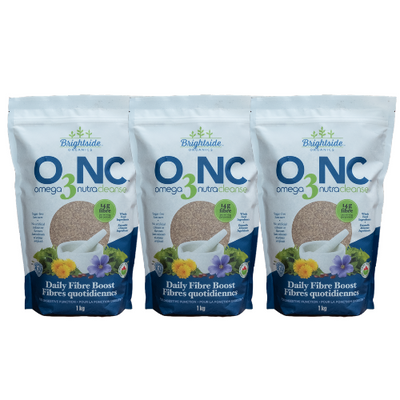Gluten-Free Recipes for the Holidays
Holiday Cooking and Baking, Sans Gluten
The fall and winter months tend to bring along a whole new style of eating (well, for most of us, anyway). We’re not eating the juicy fresh fruits and fresh garden salads as much, but bring on the warm baked goods and hearty pasta dishes.
Holiday cooking is very different than during the rest of the year–it’s all about the comfort foods!
The sudden influx of gym memberships every January is no coincidence: while eating this way, we aren’t just filling up on too many carbohydrates, we’re also filling up on gluten, a protein found in wheat and a few other grains (which is a common ingredient in the foods we just named above) and difficult for many people to digest.
For those living with celiac disease (currently 1 in 133 people in Canada) or those who suffer with gluten sensitivities and allergies, many of these foods can be made with substitutions to make them gluten-free!
Here are 5 wheat alternatives commonly used for holiday cooking and baking:
Buckwheat
Although ‘wheat’ is in the name, buckwheat contains no actual wheat. It’s gluten-free! (And technically it’s a seed that we treat like a grain, like quinoa.) Its nutritional profile boasts high levels of vitamin B6, pantothenic acid, niacin, folate, thiamine and choline.
Buckwheat is available in roasted or unroasted, in whole grain form as well as in flour, and often used as a substitute to make gluten-free pancakes!
Corn
Corn kernels are dried and then ground into meal called cornmeal, polenta or grits, depending on the method used a how finely ground it is. Nonetheless, all three are gluten-free.
Cornmeal is an excellent source of iron, magnesium, phosphorus, zinc and vitamin B-6. Creamy stove top polenta makes for a delicious alternative to mashed potatoes or pasta. Don’t discount on corn, but when possible, make sure to buy organic and non-GMO.
Quinoa
Technically a seed, quinoa is a fabulous replacement for grains that may contain gluten. It’s also a good source of protein, making it ideal for those who have vegetarian and/or vegan diets.
Quinoa boasts anti-inflammatory benefits and can help lower cholesterol. It can be consumed as a grain, or milled into flour to be used in gluten-free baking or to make gluten-free pasta!
Honestly? Holiday cooking is a breeze with quinoa.
Oats
Oats are gluten-free, but come with a disclaimer: many oat crops suffer from cross-pollination from neighbouring wheat fields, rendering them not gluten-free. To be sure the oats you’re eating are free of gluten, look specifically for a gluten-free label—these oats originate from fields nowhere close to wheat crops.
Brown Rice
Rice—especially sprouted brown rice—is a great grain to incorporate into any diet. It’s super versatile, and definitely gluten-free.
Of course by adding Omega3NutraCleanse® (also technically gluten-free, though not yet formally certified as such) to your favourite dishes, you are further increasing their goodness with a healthy portion of your recommended daily fibre intake.


